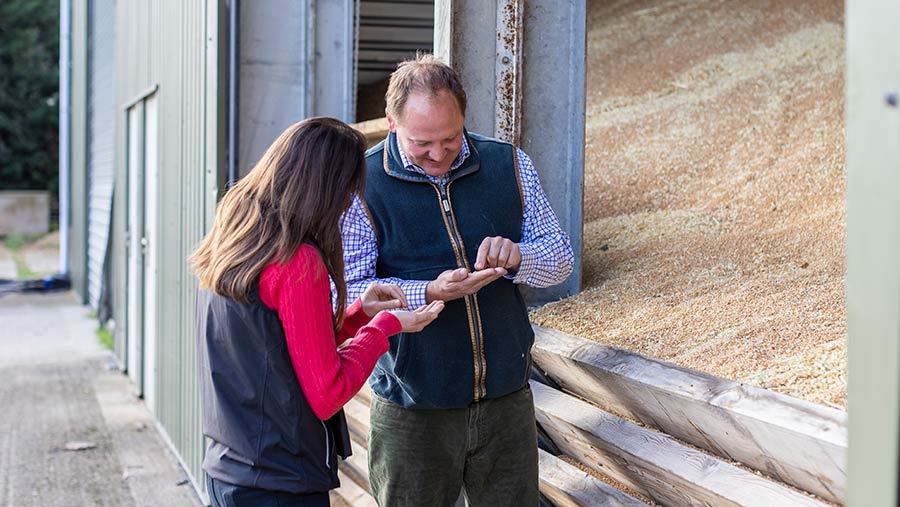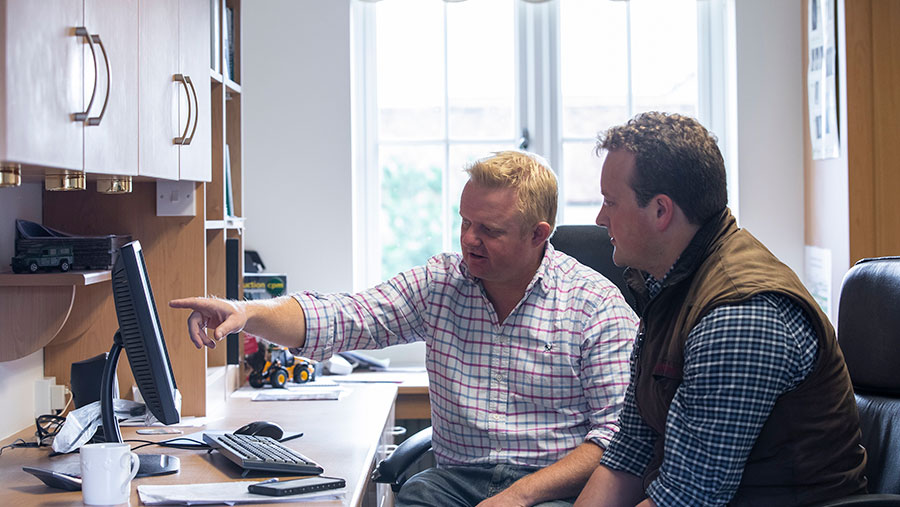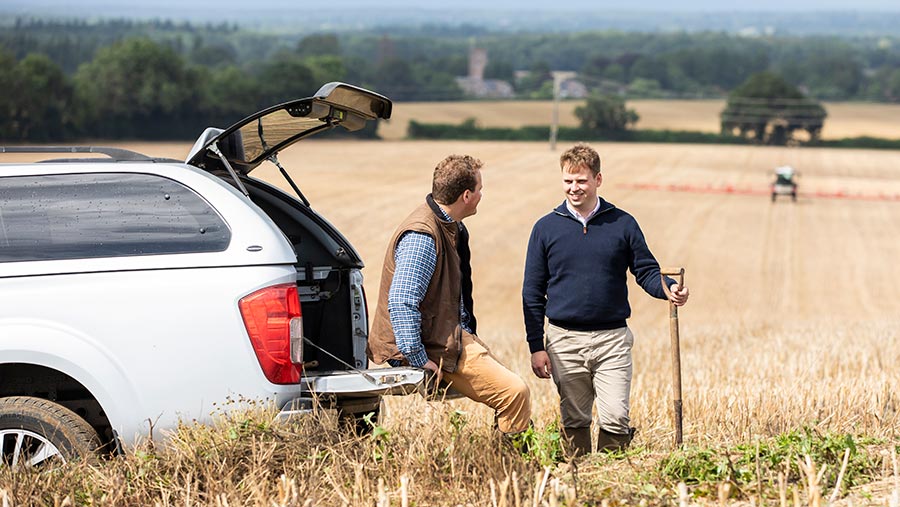Advertiser content
Arable budgeting tool predicts profit drop for this harvest
Provided by
With over 125 years of experience, Strutt & Parker has deep roots and a comprehensive understanding of what makes the rural economy work and the legislation that is driving change. Our rural teams offer a unique mix of financial, land and property expertise and can advise you across every service and discipline from farming, forestry and viticulture to natural capital, renewable energy and biodiversity.
Higher working capital requirements, lower commodity prices and the fall in the value of basic payments mean net margins for harvest 2023 could be less than 50% of last year’s level.
“Arable producers are operating in a higher risk environment than they have ever experienced before,” says Andrew Atkinson, farming consultant and director with Strutt & Parker.
“Not only are we in the teeth of the government’s post-Brexit agricultural transition which is seeing the main support scheme being rapidly withdrawn, but national and global events have pushed prices for all major inputs rapidly upwards, not least fuel, fertiliser and chemicals, but also machinery, labour and other overheads.

© BNP Paribas Real Estate
“Working capital requirements have risen by almost 40% when comparing the 2021 crop with the budget for the 2023 crop. Just at the time that the cost of borrowing has increased sharply too.
“We all know the days of BPS are numbered and this year will be the year that most businesses really start to miss what has been a lifeline of farming support going back decades.
“These are real risks that will test the most proficient land manager and so where can you start in finding a route through?”
Forecasting harvest 2023
Successful businesses find ways to manage risk, and time spent in budgeting and cash flow forecasting will be more important than ever before.
Strutt & Parker’s farming and research team has therefore developed a tool to help assess how sensitive the net margins are to changes in some of the main variables, such as fertiliser and diesel costs, and crop sales values.
Using the 2021 harvest year as its baseline and adding results from 2022, this tool has been used to forecast how the results may change for the 2023 harvest.
The tool itself compares income, expenditure and profits for arable farms, initially using a universal set of assumptions to provide an overview of the changing situation.
However, its main value is seen when tailoring the assumptions to a business’s own individual circumstances.
Most of the variables can be changed including rotation, areas grown, yields, input and output prices so that the results can reflect most businesses.
It produces figures for in-hand land, contract farming agreements and let land.

© BNP Paribas Real Estate
‘Baseline data’
For an initial quick glance, the tool utilises standard baseline data and assumptions as to the movements in input and output prices to produce standard receipts, costs and net-margin figures automatically.
Yields come from Strutt & Parker’s Yield Survey and contract farming charges from our Contract Farming Agreement Survey.
2021 baseline
The 2021 baseline shows a net margin, which can be considered the equivalent of profit, of £479/ha for in-hand land and £574/ha (after the contractor’s first charge) for a contract farming agreement (of which £418/ha is due to the farmer as opposed to the contractor).
These figures are based on typical costs for the 2021 harvest (i.e., ammonium nitrate (AN) fertiliser at £275/t and red diesel at £0.65/litre), and an average wheat sale value of £180/t (from which the other crop prices are adjusted).
2022 Provisional estimate
The variables that are used to make the ‘standard’ projections reflect the wide range of movements in input and output prices:
-
- Crop prices have been increased (to £260/t average wheat price)
- Basic payments reduced to reflect the planned reductions
- Agri-environment income unchanged as most new agri-environment schemes were not open during the period
- Seed costs increased (by 25%, linked to higher crop prices)
- Fertiliser costs increased (to £500/t average cost of AN, compared with £275 for 2021).
- Spray costs increased (by 20% to reflect changes in market prices)
- Diesel costs increased (to £0.95/litre for red diesel, compared with £0.65/litre for 2021 NB: As many farmers have diesel stores, it is assumed that 60% of the diesel used was at the higher price)
- Labour costs increased (by 5%)
- Property and machinery maintenance costs increased (by 10%).
Using these assumptions, the 2022 ‘standard’ net margins increased to £776/ha for an in-hand farm and £868/ha (after the contractor’s first charge) for a contract farming agreement (of which £553/ha is due to the farmer as opposed to the contractor).
This is a result of the increase in receipts being greater than the increase in variable and fixed costs.
For a typical sized in-hand arable farm (131 hectares), the working capital needed to pay for variable and fixed costs increased by 28% (from £121,500 (£935/ha) to £155,000 (£1,183/ha) for a farm with 131 ha of arable crops).
2023 projections
The variables for ‘standard’ figures have again been adjusted in line with predictions for input price movements (many of which have already been incurred) and for output prices (much of which remains to be established):
- Crop prices have reduced markedly (to £220/t average wheat price)
- Agri-environment income increased (by 30% as some new schemes open)
- Fertiliser costs increased (to £600/t average cost of AN – assuming most bought early and some bought later at lower prices)
- Diesel costs increased (to £1.05/litre, for all diesel used)
- Labour costs increased (by 10%, compared with the 2021 baseline)
- Property and machinery maintenance costs increased (by 20%, compared with the 2021 baseline).
Due to costs rising, BPS dropping and crop sales receipts falling (by around 15%), the 2023 ‘standard’ net margins for in-hand land decrease to £366/ha; this is 23% lower than the 2021 baseline level.
The 2023 ‘standard’ net margins for a contract farming agreement drop to £481/ha (after the contractor’s first charge) of which £375/ha returns to the farmer as opposed to the contractor.
As in 2022, the working capital needed to pay for variable and fixed costs is much higher, having increased by approximately 39% compared with 2021 to £169,000 (£1,287/ha) for a farm with 131 ha of arable crops.
‘Standard’ receipts costs and net margins for in-hand farm |
|||
|
|
Harvest years |
||
|
£/ha |
2021 |
2022 (Forecast) |
2023 (budget) |
|
Output |
1,413 |
1,959 |
1,653 |
|
Variable costs |
452 |
653 |
706 |
|
Fixed costs |
483 |
530 |
581 |
|
Net margin |
478 |
776 |
366 |
|
Source: Strutt & Parker |
|||
Conclusion
Despite the falling value of the basic payment, many businesses will have seen some good results from the 2021 and 2022 harvest years.
In the arable sector we saw output prices take off following the Russian invasion of Ukraine due mainly to concerns about how grain could possibly make its way out of the ‘breadbasket of Europe’ during the conflict.
Although not helpful to the livestock sector – and for pig and poultry producers it was verging on catastrophic – the higher sale values provided arable producers with much-needed respite and the chance to make a reasonable profit.
Wheat futures prices peaked briefly in May 2022 at over £350/tonne, but that feels like a very long time ago, as the trend since then has been downwards, to current levels of perilously close to £200/tonne and the outlook remains incredibly uncertain.
How many farmers still have grain unsold from last harvest? Probably more than are brave enough to admit.
At current wheat values, the outlook – in terms of profitability – for harvest 2023 is worrying.
Fixed costs have effectively re-based on account of high inflation; the Office of Budget Responsibility (OBR) is forecasting inflation to fall to 2.9% by the end of the year, but the damage has already been done by the significant inflation we have seen over the past 12 months or more (remember that the Consumer Prices Index (CPI) was already at 5.1% in November 2021).
Some of the highest price rises last year were seen in the fertiliser market – nitrogen in particular – as concern was rife about shortages in advance of this spring and summer.
Although prices have dropped significantly with the falling gas price, most farmers bought some or all of their requirement forward in order to guarantee their supplies.
Those prices are now 50% higher than spot prices which will make it very painful indeed when writing out the cheques for spring deliveries.
What this all highlights is that the cash flow effects of the higher working capital requirements starting in 2022 will need careful management, and this is particularly relevant to those businesses which are reliant on borrowings.
The record low interest rates we have been used to since 2008 are now consigned to history.
For those reliant on variable rate overdrafts or loans, the added interest costs will need to be factored in to cash flow forecasts.

© BNP Paribas Real Estate
Proactive businesses
The outlook for the 2023 crop year is uncertain and at real risk if grain markets continue to weaken.
With fertiliser prices having reduced from their highs, farmers should look again at optimum application rates and, particularly if crops have been sold forward at higher values, reassess whether higher rates are justified in order to push yields.
It is yield rather than fertiliser price that has the greatest effect on gross margin.
Proactive businesses are looking at various ways of mitigating input costs; not just this year but to become the norm.
On a basic level this might mean re-visiting the idea of organic manures including bio-solids to reduce the quantity of artificial fertilisers needed, or substituting ammonium nitrate with urea for part or all of the requirement.
The best farmers really understand their soils and this involves testing for all nutrients including nitrogen.
In the past SMN testing may not have been cost effective but now, if it can lead to a justified reduction in fertiliser use, then it will pay for the cost of the testing many times over.
We are also now seeing that cultivation practices are very much under the spotlight to see whether there are more efficient ways to create a seed-bed.
Diesel at £1/litre helps to focus the mind, and if crops can be established without moving so much soil then savings in diesel (along with other related costs) can be significant.
Looking more widely at the business, growers should also be looking at all opportunities to generate additional income through one of the new Environmental Land Management (ELM) schemes, diversification and renewables.
If you would like one of our farming team to run your figures and rotation through our calculator, please contact rural.enquiries@struttandparker.com.
Alternatively, contact Andrew.atkinson@struttandparker.com or Jason.Beedell@struttandparker.com.
